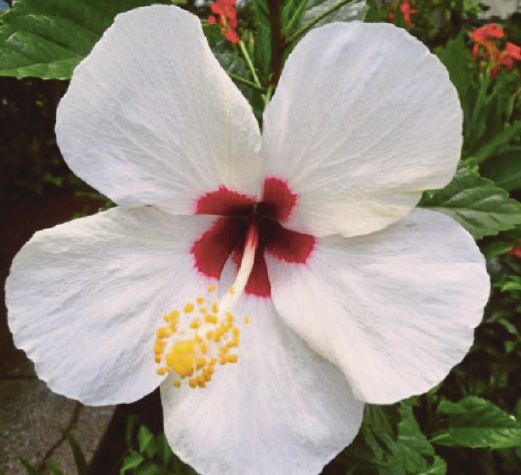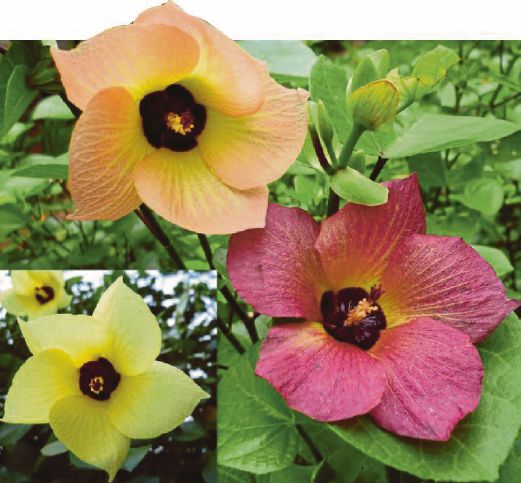

Our national flower, the Bunga Raya, represents courage, political and economic strength, among other things. Elaine Yim writes
TOMORROW we celebrate our 57th Merdeka. Let’s appreciate the beauty of our national flower, the hibiscus, and find out more about the plants from the hibiscus family Malvaceae.
Malvaceae includes more than 200 genera and 4,000 species of flowering trees and shrubs, some of which are of economic importance, such as cotton and cocoa. It also includes plants as diverse as the kapok, baobab and durian.
OUR NATIONAL FLOWER
Hibiscus rosa-sinensis is the national flower of our country. Our first Prime Minister, Tunku Abdul Rahman Putra Al-Haj, selected this species, also known as the “common hibiscus” because it grows abundantly here.
The red colour represents courage, political and economic strength, while the five petals denote the five principles of Rukun Negara. The many different varieties and cultivars of the hibiscus represent the rich, multi-ethnic multi-cultural background of our people.
The Malay name for hibiscus is “bunga raya”, which means flower of celebration.
There are countless varieties of hibiscus rosa-sinensis plants and we are spoilt for choice. The flowers can be single or double, big or small, in many different colours, shades and colour combinations. Many new hybrids and cultivars are being produced by the horticulture industry regularly, so look out for them when you go flower hunting at the nurseries.
The double flower varieties are gorgeous. They look like roses without thorns.
HOW TO GROW
Most varieties can be grown under a full sun and easily propagated by cuttings. The Hawaiian cultivars, meanwhile, prefer some shade, are heavy feeders and their flower buds may abort easily. But don’t despair. Do continue to experiment with what you like. After all, beauty is transient so enjoy the moment while it lasts!
Hibiscus rosa-sinensis flowers lasts only a day. They are edible and attract sunbirds and butterflies.
Hibiscus plants need rich, moist, well-drained soil, regular watering and full sun to partial shade. Propagation is by cuttings unless otherwise stated.
VARIETIES
Hibiscus sabdariffa or roselle is grown for its edible sepals, which are used to make the vitamin-rich hibiscus drink. The flowers last only a few hours. Propagate by seeds.
Hibiscus acetosella is known as cranberry hibiscus, false roselle, African rose mallow or red-leaf hibiscus. It is grown for its ornamental dark maroon Japanese maple-like foliage.
Hibiscus mutabilis is known as changeable rose hibiscus, Chinese rose or confederate rose. It is the official flower of Chengdu city, China, where it is known as the mu fu rong. The flowers, which can be single or double, opens white in the morning and changes to pink as the day gets warmer. This plant is very prone to mealy bugs.
Hibiscus schizopetalus is known as coral hibiscus, fringed hibiscus or lantern hibiscus. The flower stalks dangle downwards like lanterns. The petals are incised with fringed patterns and fold upwards. Best displayed on a pergola or trained as a small tree.
Hil biscus syriacus is known as Rose of Sharon in USA, rose mallow in the UK and St Joseph’s rod in Italy. It is the national flower of South Korea, where it is known as mugunghwa, meaning eternity. The flowers, which may be single or double, are white, pink, blue or purple. This temperate plant is native to East Asia. The most spectacular bushes are found in France where they flower prolifically. Over here, they flower sparingly.
Hibiscus tilaceus or sea hibiscus is a bushy tree with heart-shaped leaves. The flowers open as bright yellow and gradually change colour to pink.
Hibiscus moscheutos, also known as swamp rose mallow or rose mallow is native to USA. The flowers are jumbo-sized, as large as a dish or the palm of your hand. The colours can be red, pink or white with a red centre. The flowers can last two to three days. This compact bush of about two metres tall is best grown under the full sun. It is a heavy feeder.
Malvaviscus arboreus, also known as Turk’s cap, is a scraggly bush with small upright flowers which are always half open.
Malvaviscus penduliflorus or sleeping hibiscus with half-opened flowers that hang downwards.
EDIBLE FLOWERS
The petals of this flower can be eaten raw. After you pluck the flowers, separate the petals from the flower stalk. Try sucking the sweet nectar from the base. Remove the pistils and use the petals to garnish salads or steep the petals in hot water to make a purple-coloured drink. When a few drops of lime juice are added, it will turn a brilliant red colour. Add some honey or sugar for taste and some ice cubes.